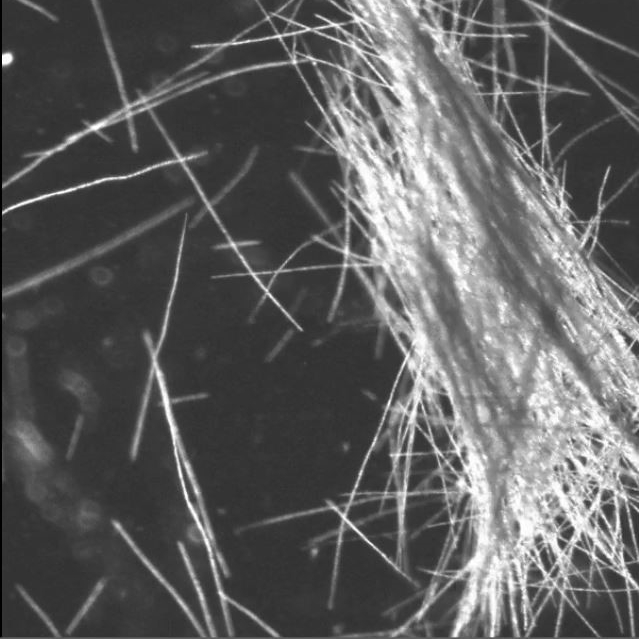Phytoplankton dwelling in the ocean, like plants on land, perform photosynthesis and fix vast amounts of carbon every year.

When nutrients are abundant, these microscopic organisms, such as cyanobacterium Trichodesmium shown, grow and divide rapidly, forming massive surface blooms composed of countless cells, which span kilometers and last for weeks. Once blooms collapse, for example due to nutrient depletion, phytoplankton cells die and start to sink, potentially exporting vast amounts of carbon to the bottom of the ocean, where it may be stored for centuries.
The magnitude of this so-called 'biological pump' relies on how frequently sinking cells encounter each other: if the encounter rate is high, cells quickly form large aggregates, called marine snow, which settle fast.
Our understanding of this naturally occurring global export of carbon thus relies on the ability to compute encounter rates between individual cells. This is difficult, because the encounter rates depend on a variety of biological, physical and environmental factors. In particular, many bloom-forming phytoplankton species are elongated: how their elongation affects encounters has remained unknown.
In two recent papers published in the Proceedings of the National Academy of Sciences (On the collision of rods in a quiescent fluid) and in Physical Review Letters (Bursts characterize coagulation of rods in a quiescent fluid), Dr. Jonasz Slomka und Prof. Roman Stocker at the Institute of Environmental Engineering closed this gap by calculating the encounter rates between rod-like objects settling in a fluid.
In particular, we demonstrated that elongated cells can form marine snow aggregates even under quiescent conditions, which represents a paradigm shift in our understanding of marine snow formation, because until now turbulence was considered to be necessary to drive encounters between cells.






